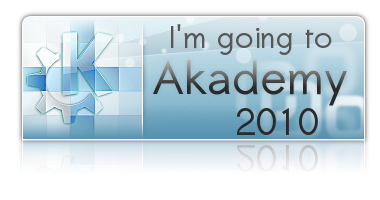It’s interesting to see Hugin show up twice in one day: Ken Wimer describes how he produced the UDS group photo with it — he focuses on the use of Hugin and the user interface — while Michael Kesper has made a panorama in Tromsø. But Michael points out an interesting issue with Hugin: a patent that may apply to the panoramic-stitching algorithm. Hugin prints a warning when using that tool, apparently.
This gives me an opportunity to talk about patents a little bit — a refreshing change from OpenSolaris packaging, even if I spend more time on the latter these days.
So, first off, the GPL (version 2, but version 3 has similar language) has an interesting clause about patents that many people forget about. It’s clause 8:
8. If the distribution and/or use of the Program is restricted in certain countries either by patents or by copyrighted interfaces, the original copyright holder who places the Program under this License may add an explicit geographical distribution limitation excluding those countries, so that distribution is permitted only in or among countries not thus excluded. In such case, this License incorporates the limitation as if written in the body of this License.
So supposing you knew in advance that a patent applied to an algorithm used in your piece of GPLv2-licensed Free Software, you could exclude those areas where the patent applies. In other words, you could have something like “Hugin is Free Software, but may not be used in the United States as a consequence of US patent #N”. A surprising idea, no? That’s one special case where Free Software isn’t necessarily Open Source software (the Open Source definition disallows restrictions by country).
Source code as such (certainly in the case of compiled languages) does not implement an invention — it merely describes an algorithm. As such, I believe that the source code of a Free Software implementation of some patented algorithm (as if it makes sense to patent an idea, but hey, some patent offices hand these things out) cannot infringe the patent even if you accept the validity of algorithmic patents because it’s just describing something that has already been published — the patent text itself! On the other hand, compiled forms of the same do implement the algorithm in a machine and might be covered. I’m not sure if anyone has really dug into the implications of the division between source and object code in this area.
In cases like this, the Open Invention Network might be of use. It’s a patent pool organization for Linux. Since Hugin isn’t part of Linux (as in, the kernel bits) it’s unlikely to be helped out directly. The OIN folks are some of the most pragmatic and sensible people I’ve talked to about the effect (negative) software patents have on us all.
A brief patent search (ah, for people who think this might disqualify me forever from participating in development, I’ll point to Andrew Tridgell’s talk on reading patents — also on OSNews) didn’t turn up anything filed by the University of British Columbia that seems to apply. However, it might have been way too brief a search, as there’s darn little to go on based on the warning message from Hugin. To do it right the warning would have to be far clearer, possibly pointing to the actual patent number. Otherwise, calling the UBC patent licensing office (actually, you need to email Greg Lowe directly) for information is a little difficult.
One article on SIFT (Scale Invariant Feature Transform?) panorama stitching can be found at Springer, although the research page for SIFT from Greg Lowe is more interesting. It at least lists the exact patent number and stuff like that. Frankly I’d rather read the research papers than the patent text — at least the papers have as goal to share knowledge with the research community, as opposed to obfuscating the invention to make it broadly applicable in courts of law. However, one could apply the mechanisms Andrew Tridgell describes to the patent, and develop a stitching algorithm not covered by the patent simply by not doing something from the method described there. For instance (I’m not an image processing guy here) finding difference images in a different way.
Kudos to the patent writer, anyway, for claim 20 “A computer readable medium comprising codes for directing a processor circuit to execute the method of claim 1”, so that the patent covers the method, apparatus for implementing the method and computers doing the same. That’s surely a convolution caused by the way the patent system works (again, Tridgell: if the patent didn’t cover computers explicitly, then you could argue that implementing the method with a computer is not what is claimed, ergo you’re free).
Ugh. Too much time spent trying to understand the whole “this is my idea and you can’t have it” (as opposed to expressions or performances of an idea) culture.
While looking for the SIFT patent, I did find US patent numbers 7,639,897 and 7,711,262 which both cover guiding a user of a digital camera in making a panorama photo. They seem awfully similar to me, although obviously there’s a giant difference (sarcasm doesn’t work in writing unless Penny Arcade does it) between sweeping a scene and then re-photographing it and indicating already-photographed areas as the scene is swept. I guess there’s no patent yet on not helping at all.
